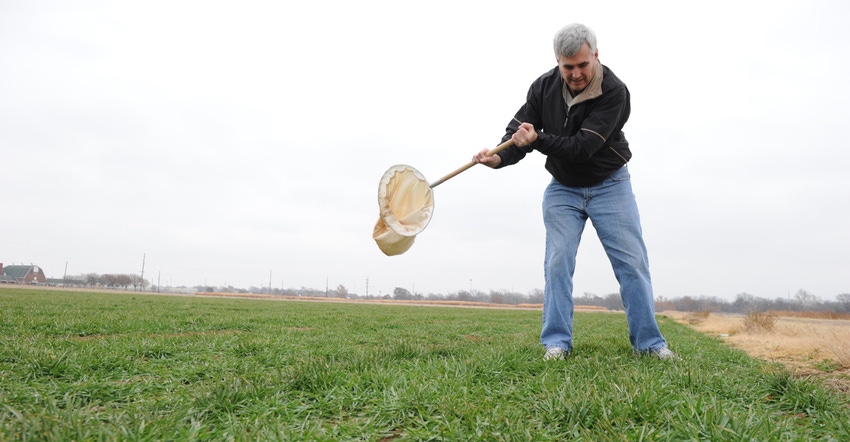
The cool, wet weather of recent weeks has been favorable for the Oklahoma wheat crop, which the U.S. Department of Agriculture recently rated as being 62% in good to excellent condition.
“In spite of extremely cold weather that hit Oklahoma in February, we didn’t see much of an impact except for those areas that didn’t have much snow cover to insulate and protect the crop,” said Amanda de Oliveira Silva, Oklahoma State University Extension small grains specialist.
Given that wheat becomes more susceptible to freeze damage as it moves into the heading stage, Silva wouldn’t be surprised to observe a difference in spring tillering for some varieties as she continues to check wheat plots in the weeks ahead. Still, the news has been good thus far for the state wheat crop overall – although OSU’s Integrated Pest Management Coordinator Tom Royer has flagged wheat aphids as being one area of potential concern.
“We’ve been out scouting fields and seen enough evidence to raise the issue,” Royer said. “Best to keep an eye out. Russian wheat aphids overwinter in our state, particularly in far western Oklahoma. It’s not unusual to observe them during spring in winter wheat.”
The Russian wheat aphid is about 1/16-inch long, lime green in color, has short antennae and a projection that gives it a double-tail appearance. The aphid can injure plants and cause yield loss in wheat, even at minimal levels of infestation. As the aphid feeds, it causes the leaf to curl, which encloses the pest and helps protect it from adverse weather, natural predators and insecticides. Visible damage symptoms to wheat include white, yellow or purples streaks on leaves.
Also, many wheat growers in the region experienced challenges in getting top dressing applications finished in March. This was mostly caused by a combination of wetter-than-normal field conditions and disruptions in natural gas production that reduced fertilizer access. Now the weather just needs to comply. The primary wheat-management concern in the coming weeks will be dodging late freezes while still getting adequate rainfall to fall on their fields — and keeping an eye out for those pesky aphids.
“Another industrywide key will be efforts to strengthen and maintain U.S. wheat markets for trade, particularly with China, Mexico and South America,” said Mike Schulte, Oklahoma Wheat Commission executive director. “While Great Plains states have received the moisture producers needed, so has a drought-stricken Russia. A lot can happen between now and harvest.”
Fact sheets detailing research-based information about growing wheat and managing crops in the global marketplace are available online and through OSU Extension county offices. Insights about wheat production practices and market advice from OSU Extension specialists are also regularly featured on the agricultural television show SUNUP, which can be viewed online.
Source: is OSU, which is solely responsible for the information provided and is wholly owned by the source. Informa Business Media and all its subsidiaries are not responsible for any of the content contained in this information asset.
Read more about:
Russian Wheat AphidAbout the Author(s)
You May Also Like




